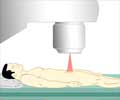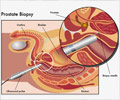
‘MRI-ultrasound biopsies accurately detect early-stage prostate cancer. But, there is a deficiency in it;s use among risky patients who benefit the most.’
Read More..Tweet it Now
"Black men have a significantly higher incidence and are up to three times more likely to die of prostate cancer than white men," says Sidana, corresponding author on this study. "MRI-ultrasound biopsy has emerged as a promising option for the detection of prostate cancer.Read More..
In this study, we wanted to identify differences in use of MRI-ultrasound biopsy between black and white men with possible prostate cancer."
Sidana says the standard biopsy for men with suspicion of having prostate cancer is a random needle collection of between 12 to 40 samples from the prostate. However, because of the random nature of the collection, this can lead to overdiagnosis of prostate cancer where treatment is not needed, underdiagnosis prostate cancer where treatment is needed and a higher rate of tests that read negative for cancer when it is truly malignant.
With fusion biopsy, a navigation system similar to a GPS tracking device allows physicians to target biopsies to the exact suspicious location. MRI and ultrasound images are aligned and overlaid on real-time ultrasound to identify targets that are then labeled high, medium or low suspicion for cancer. This allows doctors to pinpoint the biopsy, meaning less sticks with a needle and more accurate samples.
The study included 619 men, of which 182 were African-American and 437 were white; the patients were all treated at UC Medical Center. Forty-one (22.5%) African-American men underwent MRI-ultrasound biopsy compared with 225 (51.5%) of white men.
Advertisement
"Although MRI-ultrasound biopsies are shown to be a better way to detect early-stage prostate cancer, we're seeing this deficiency in a group of patients that would benefit the most from its use. We need to further investigate whether this difference is due to patient preference or if there are underlying socioeconomic, cultural or provider biases influencing this."
Advertisement











